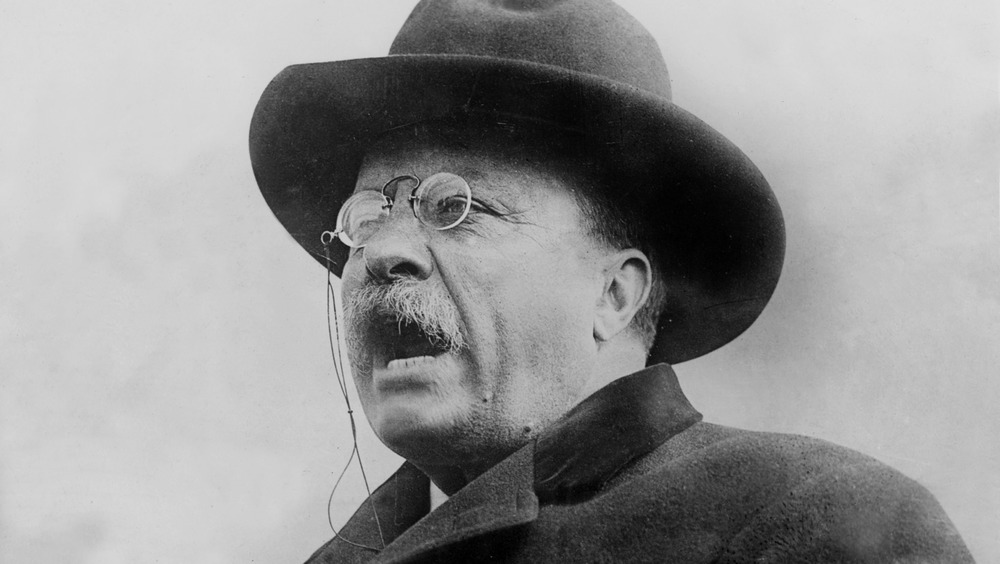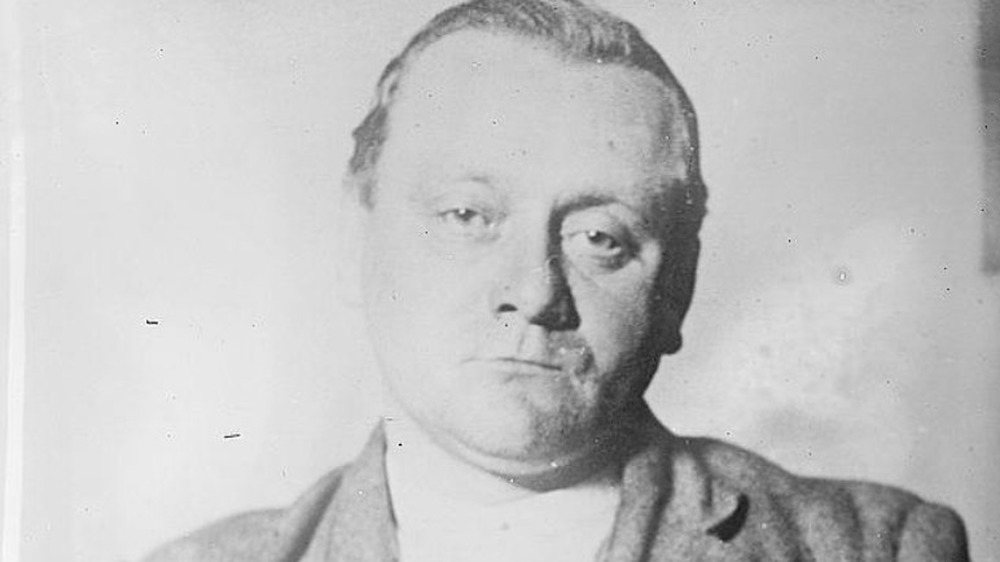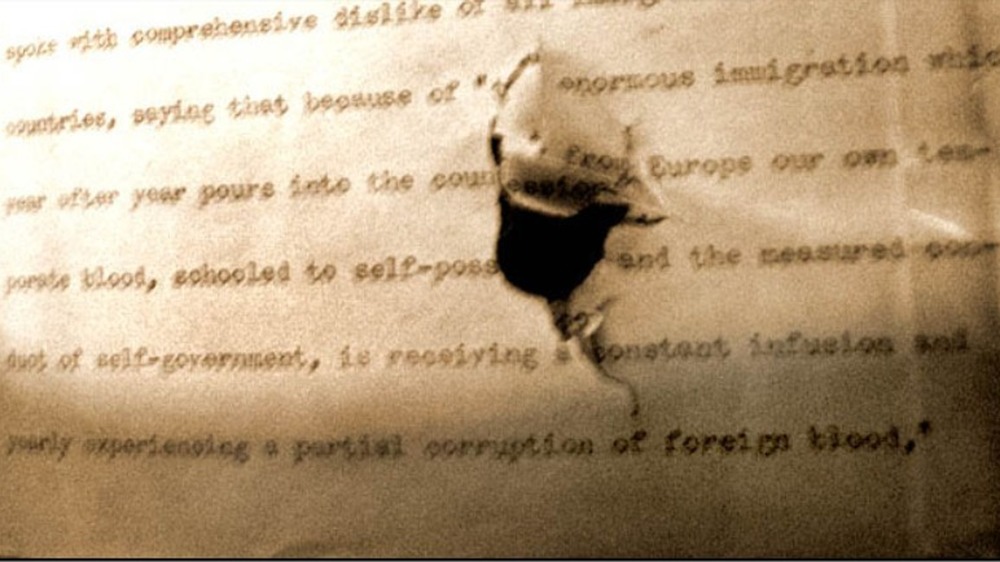Inside The Assassination Attempt Against Teddy Roosevelt
When President Theodore Roosevelt was shot on October 14, 1912, he had already been president for two terms, from 1901 to 1909. And that, it turns out, might have been the problem. According to History.com, the 1912 presidential campaign was a wild one. The Republican candidate, William Howard Taft, was the incumbent president, who had been Roosevelt's chosen successor when he left office in 1909. His Democratic opponent was Woodrow Wilson, who — spoilers — ends up winning the whole thing. Roosevelt and Taft had experienced a falling out over progressive ideals, with Roosevelt deciding he should take back over from Taft to show him how it was done. This political infighting was so severe that they had to hide barbed wire under the patriotic banners and ribbons at the Republican National Convention that year.
In the end, Roosevelt split off on his own and ran as a third party candidate for the Progressive Party, somewhat more famously nicknamed the Bull Moose Party as in, "Despite his age, Roosevelt still felt as fit as a." Roosevelt was subsequently blasted by his former party as a traitor whose greed for power would lead him to break the longstanding tradition of a two-term limit for presidents. It was under these conditions that President Roosevelt went to Milwaukee, Wisconsin, to make a campaign speech to his supporters at the Milwaukee Auditorium that October evening. While waving to the crowds from his open-air car on his way from the Gilpatrick Hotel, a gunshot from five feet away rang through the night.
The man who tried to kill Theodore Roosevelt
As soon as the shot had been fired, Roosevelt's stenographer managed to grab the assailant and disarm him before he could fire another shot. As History.com explains, the crowds began calling for the lynching of the would-be assassin, but Teddy Roosevelt, even with a bullet in his chest, proved calmer than the rest of the crowd. He told the furious mob not to hurt the man who had shot him and to bring him forward. When Roosevelt asked the man why he had done it, the shooter offered no reply. Roosevelt then had the man turned over to the police.
The shooter, it turns out, was a man named John Schrank, a 36-year-old bar owner from New York City who had been stalking Roosevelt on the campaign trail for weeks, following him from New Orleans up to Wisconsin before getting close enough to take his shot. In Schrank's pocket was a note on which he had scribbled a paranoid screed explaining that he had dreamed that a zombie William McKinley told him to kill Theodore Roosevelt. The only further explanation given was that Schrank had succumbed to the virulent rhetoric against Roosevelt's seeking of a third term. In Schrank's own words, he wasn't trying to kill Roosevelt the man, but rather Roosevelt the third-termer. Schrank was found at trial to be mentally ill and was subsequently confined for life to a Wisconsin state asylum. Roosevelt, meanwhile, proceeded to Milwaukee Auditorium with a bullet in his chest. He had a speech to deliver.
It takes more than a bullet to stop Theodore Roosevelt
As an experienced hunter and outdoorsman, Roosevelt knew from the lack of blood that the bullet had not hit his lung. And so, as History.com explains, he decided to give a speech instead of going to the hospital. As it turns out, he had planned to give a lengthy speech, and that was what saved his life. The bullet, which had been on a collision course with Roosevelt's heart, had instead penetrated a folded up 50-page speech and a steel glasses case before leaving a dime-sized hole next to Roosevelt's ribs. When Roosevelt ascended to the stage, he said to the hushed crowd, "I don't know whether you fully understand that I have just been shot." He then opened his coat to reveal his blood-stained shirt, pulled out his bullet-riddled speech, and then delivered the most baller line in presidential history: "It takes more than that to kill a bull moose."
Teddy Roosevelt went on to deliver a 90-minute speech, which was not, shockingly, the entire original thing. Over time, his voice weakened, and it got harder for him to breathe, but every time his staff attempted to take him off stage, he glared at them until they relented. He only agreed to go to the hospital once he had finished the entire speech. The bullet stayed in Roosevelt's chest for the rest of his life, and he finished second in the election, the best-ever showing for a third party candidate.


